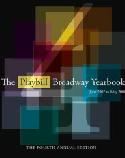SITE GUIDE
SEARCH
REVIEWS
REVIEW ARCHIVES
ADVERTISING AT CURTAINUP
FEATURES
NEWS
Etcetera and
Short Term Listings
LISTINGS
Broadway
Off-Broadway
NYC Restaurants
BOOKS and CDs
OTHER PLACES
Berkshires
London
California
New Jersey
Philadelphia
Elsewhere
QUOTES
TKTS
PLAYWRIGHTS' ALBUMS
LETTERS TO EDITOR
FILM
LINKS
MISCELLANEOUS
Free Updates
Masthead
A CurtainUp Review
Chekhov Lizardbrain
For years Iíve forwarned my friends about my offbeat taste in theater when inviting them to join me. Thankfully, last weekend Chekhov Lizardbrain vindicated my taste for things weird and brain-twistingly complex. It's everything that great avant-garde theater should be
Pig Iron Theatre Company is a favorite in Philadelphia, but unfortunately doesnít make it to New York that often. Their Obie Award-winning Hell Meets Henry Halfway, featuring the works of Witold Gombrowicz conceived as a tennis match, played here in 2004, but there hasnít been anything since. Chekhov Lizardbrain, currently at the Ohio has instantly become one of my all-time greatest viewing experiences. I donít say this often, but you really must see it right away.
Loosely based on Chekhovís Three Sisters and the writings of autistic author Temple Grandin, who wrote about the "three brains" (reptilian, mammalian, and human) which support basic life functions, emotion, and reason and languag present in all of us, Chekhov Lizardbrain is sort of an unfastened circus of the mind. It features Dmitri, an autistic botanist, and his alter-ego Chekhov Lizardbrain, who is as outgoing and entertaining as an autistic emcee can be. Chekhovís three sisters have become three brothers—Nikolai, Pyotr and Sasha— who live in Oswego, New York. Nikolai and Pyotr want to sell the house to Dmitri, but Sasha doesnít want to sell the family homestead. Sometimes the action takes place in modern-day Oswego, sometimes in a sort of nineteenth-century Russia of the mind in which the three brothers are attired in top hats, vests, and long underwear (but nothing else). We are also taken to nowhere which is either inside Dmitriís or Chekhov Lizardbrainís head. Sometimes the brothers are merely autistic extensions of Dmitri, all playing indistinguishable, twitching Rain Men.
It sounds spastic, but itís much more beautiful than that. As weíve begun to learn in recent years, the autistic brain is much more layered and complex than outside appearances would indicate and this play succeeds in capturing that multilayered intricacy. I assume the production hasnít changed much since its premiere in Philadelphia last year (Curtainup's review). The space at the Ohio has been entirely reconceived in an enchanting way (by set designer Anna Kiraly). A simple ring of red velvet ropes circles the playing space, which is backed by heavy red velvet curtains that open to reveal—well, I suppose itís the inside of main character Dmitriís brain, imagined as receding waves of blue, like an underwater cave. Dozens of light bulbs, hung on single strands, are tangled above. James Clotfelterís lighting design is the most soulful and evocative Iíve seen in quite a while; even his tangle of bare light bulbs is striking and haunting.
James Sugg as both Dmitri and Chekhov Lizardbrain is phenomenal. His deadpan soliloquies as Chekhov Lizardbrain are hilarious and form the perfect beginning and ending. This is not to suggest the other three performers are not equally brilliant. Gabriel Quinn Bauriedel, Dito van Reigersberg and Geoff Sobelle, along with Sugg, demonstrate a deep love for the piece and a wholly matched playing style. These Pig Ironís actors make one of the best arguments for resident acting companies Iíve seen. These four have obviously worked together before and their familiarity with each other and the text (along with Dan Rothenbergís brilliant direction) keep Chekhov Lizardbrain from descending into being avant-garde for the sake of being avant-garde. My only regret is that this isnít playing longer.
|
Chekhov Lizardbrain Conceived and created by Pig Iron Theatre Company; Text by Robert Quillen Camp Directed by Dan Rothenberg With: James Sugg, Gabriel Quinn Bauriedel, Dito van Reigersberg and Geoff Sobelle Set Design: Anna Kiraly Sound Design: Nick Kourtides Costume Design: Olivera Gajic Lighting Design: James Clotfelter Running Time: 75 minutes with no intermission SoHo Think Tank at the Ohio Theatre, 66 Wooster Street; 212-868-4444 Oct 2-4, 8-9, 11, 14-16 and 18 at 8 pm; Oct 5, 10, 12 and 17 at 7 pm; Oct 10 and 17 at 10 pm; and Oct 12 and 19 at 2 pm Tickets $25, $35 Friday and Saturday October 2 through October 19 Reviewed by Jenny Sandman based on October 4th performance |
|
REVIEW FEEDBACK Highlight one of the responses below and click "copy" or"CTRL+C"
Paste the highlighted text into the subject line (CTRL+ V): Feel free to add detailed comments in the body of the email. |






